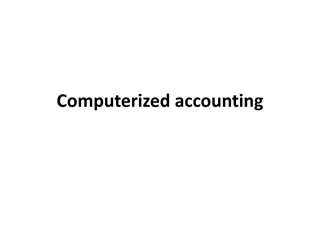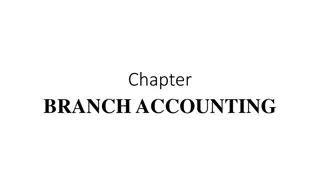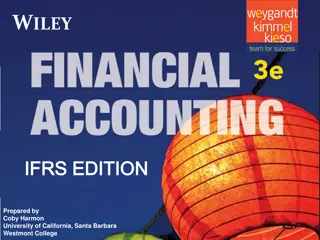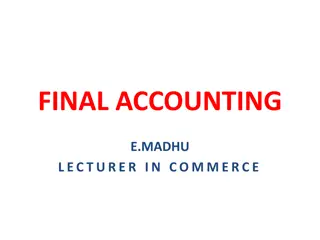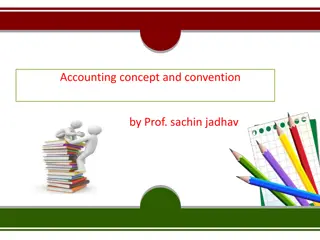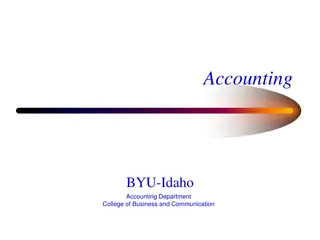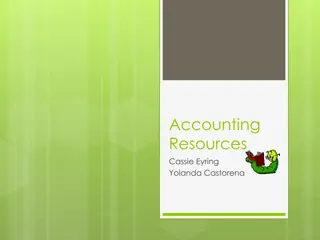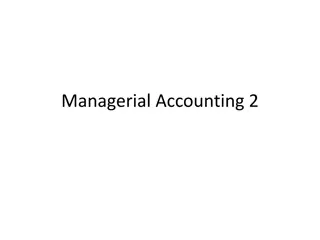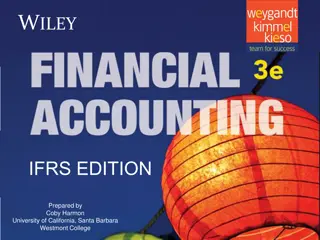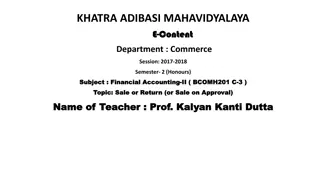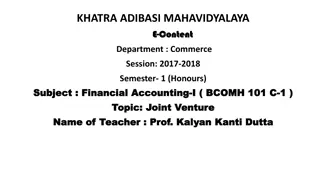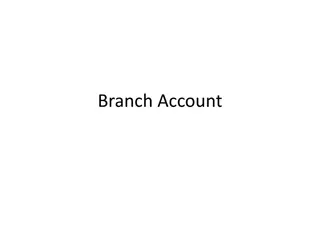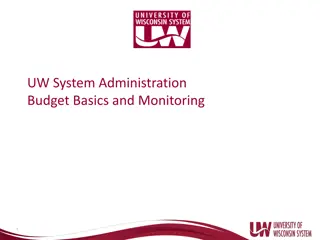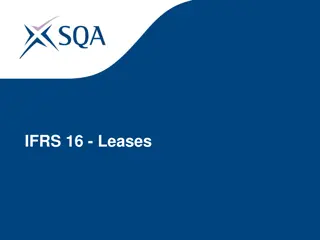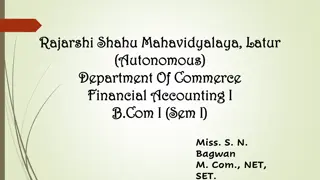Understanding Subsidiary Books in Accounting
Subsidiary books are specialized accounting records used to categorize and organize certain types of transactions within a business. There are four main types of subsidiary books: Purchase Book, Sales Book, Purchase Return Book, and more. These books help maintain accurate financial records by recording transactions in a sequential and organized manner, providing a clearer overview of business activities.
Download Presentation

Please find below an Image/Link to download the presentation.
The content on the website is provided AS IS for your information and personal use only. It may not be sold, licensed, or shared on other websites without obtaining consent from the author. Download presentation by click this link. If you encounter any issues during the download, it is possible that the publisher has removed the file from their server.
E N D
Presentation Transcript
Subsidiary Book : Subsidiary transactions belonging to the same category in a particular book in a sequential manner. Also, the transactions are recorded in their original form, i.e. as and when the transactions occur, they are entered in the subsidiary book before posting them anywhere that is why they are also known as the book of original entry. Basically, Journal is a book in which primary entries are made as and when they take place. However practically there is an end number of transactions that take place on a day-to-day basis, so it is not easy to record all the transactions in one place, i.e. journal, as it will become unnecessarily bulky and increase the occurrence of errors. For this purpose, the journal is sub- divided into special journals, which we call subsidiary books. books are special-purpose accounting books that record
Types of Subsidiary Books There are four types of subsidiary books
Purchase Book This book is used to keep a record of all credit purchases of the goods made by the firm during the course of the accounting period. For this purpose, Purchase invoices act as a base for recording transactions in the purchase book. However, credit purchases of the fixed assets are entered in the journal proper. It indicates the name of the parties from whom goods are bought on credit. So, these parties are creditors of the firm. And, creditors accounts will be credited with the amount, in the purchases book. Further, the total of the purchase book will be posted to the debit of the Purchase Account, at the end of the month.
Sales Book This book keeps a track of all the credit sales of goods made by the firm during the course of the accounting period. Sales invoices form the base for recording sales transactions. It is worth noting that credit sales of assets are entered in the Journal Proper. It shows the name of those customers to whom the goods are sold on credit, which are technically the debtors of the firm. Further, the account of the debtors needs to be debited with the respective amount. The total appearing in the sales book reflects the credit sales that took place during the period. So this amount is taken to the credit of the Sales ledger at the end of the month.
Purchase Return Book Otherwise called a return outward book, it keeps a record of the returns of the goods made to the suppliers by the firm. On returning the goods to the supplier, the debit note is issued by the firm (debtor or buyer) to the supplier (creditor or seller). The debit note acts as a base for recording transactions in the purchase return book. For this purpose, debit is made to the creditor s account with the respective amount. And the total amount of this book is transferred to the credit of the purchase return ledger. It is to be kept in mind that the return of cash purchases should be entered in the cash book
Sales Return Book Also known as the return inward book, this book maintains a record of goods returned by the customers which are sold by the firm. When the customer return goods to the firm, a credit note is issued to the customer (buyer or debtor) by the firm (creditor or seller). These notes act as a basis for recording the transaction in the sales return book. So, the debtor s account is credited with the respective amount as return inward and the total amount of the goods returned is posted to the debit of the sales return account. It is worth noting that the return of the sales made in cash is entered in the cash book.
Bills Receivable Book When the firm draws bills in favor of its customers then the book maintained to keep a record of such bills is called bills receivable book. The amount will be posted at the credit side of the individual party s account as bills receivable. The total of bills receivable book will be taken to the debit side of the bills receivable account at the end of the month. Here it should be noted that the transactions associated with bills dishonor, endorsement, etc are not entered in this book, as they are entered in Journal.
Bills Payable Book Bills payable book keeps a record of all the bills accepted by the firm drawn by the suppliers for the purpose of the payment at a future date. The amount will be posted on the debit side of the individual party s account. Further, the total of these books is credited to the bills payable ledger account at the end of the month.
Cash Book All the transactions, related to receipts and payments related to cash sales, cash purchases, sale of assets in cash, payment of expenses in cash, receipt of income in cash, etc which are either made by cash or cheque are recorded in the cash book.
Journal Proper In case no special book exists for recording a transaction, these are entered in the journal proper. In general, journal proper contains entries such as opening entries, closing entries, rectification adjustment entries, entries for bills dishonor, miscellaneous entries, etc. entries, transfer entries,
Advantages of Subsidiary Books Automatic classification of transaction: As a separate book exists for every category of the transaction, so the transactions belonging to a specific category are recorded in one place. Easy for Reference: As different books are maintained for different types of transactions, the reference becomes very easy as one can refer to the concerned subsidiary book, which reduces the wastage of time in finding the entries. Facilitates division of work: As the journal is divided into multiple subsidiary books, the work of recording the transactions is divided among different employees, which helps in the instant recording of transactions. And so the responsibility of maintaining the book can be entrusted to an employee who will keep it up to date. Identification of Error: In case the Trial Balance does not tally, the errors can be easily located and rectified. Internal Check system: As the recording of different transactions is done by different employees, the work is divided in a manner in which it the work performed by one person is automatically checked by another person. In this way, it enables internal checks and prevents the occurrence of errors and frauds. Ease in transfer: When the entries are made in separate books, they can be easily transferred to their concerned ledger account. Classification of transaction: Transactions can be easily classified into cash transactions and credit transactions.

















